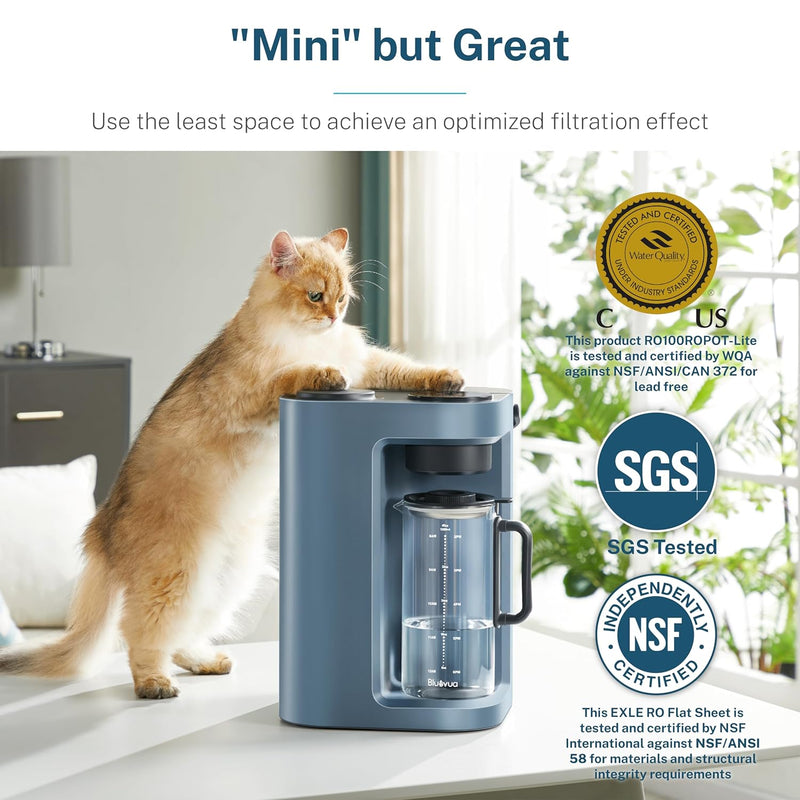Discover the Secret to Pure, Refreshing Water for Your Home!
Having access to clean, safe drinking water is essential for every household. Unfortunately, many tap water supplies are contaminated with various impurities that can pose health risks if consumed over time. Common contaminants include lead, chlorine, bacteria, and sediment, which can lead to serious health issues such as gastrointestinal problems and, in some cases, long-term illnesses. This is why investing in a reverse osmosis (RO) water purifier is a smart choice, especially for small households with two members. By utilizing advanced filtration technology, an RO system not only ensures the removal of harmful substances but also provides a steady supply of refreshing, pure water right from your kitchen. In this article, we will delve into the benefits of an RO water purifier, particularly tailored for homes with two individuals.

Understanding Reverse Osmosis Technology
Reverse osmosis is a cutting-edge filtration process that effectively removes impurities from water by using a semi-permeable membrane. The principle behind this technology is relatively simple: water is forced through the membrane under pressure, which allows only water molecules to pass through while blocking larger contaminants, including salts, chemicals, and microorganisms. The filtration process typically involves several stages, starting with a pre-filter that captures larger particles, followed by the RO membrane itself, and ending with a post-filter for polishing the water. This multi-layered approach ensures that the water you consume is not only free from harmful substances but also tastes better. Friends of mine who recently installed an RO system reported a significant improvement in their drinking water quality, leading to a noticeable difference in their overall health and well-being.
Benefits of a Reverse Osmosis Water Purifier for Two Members
For a household with just two members, a reverse osmosis water purifier offers several distinct advantages. Firstly, its filtration capacity is generally sufficient to meet the daily water needs for drinking, cooking, and other uses, ensuring that you never run out of pure water. Furthermore, RO systems are designed to minimize water waste, which is a significant concern when selecting a filtration system. Many modern units have improved efficiency, producing more purified water while discarding less. Additionally, having a dedicated water purification system at home means you can enjoy the convenience of readily available purified water at all times. This was particularly beneficial for my friends who often host small gatherings; they found it easy to provide their guests with clean, filtered water without the hassle of buying bottled water.
Key Features to Look for When Choosing a Purifier
When selecting a reverse osmosis water purifier for a household of two, it's crucial to consider several key features to ensure you choose the right model. Start with the filtration capacity; a smaller household may not require an extensive system, so look for one that provides sufficient output without unnecessary excess. Size is also an important factor—compact units are ideal for kitchens with limited space. Ease of installation is another consideration; many modern systems are designed for DIY installation, making it simple to set up without professional help. Maintenance requirements should not be overlooked; choose a model that has accessible filters and straightforward maintenance procedures to keep your system running efficiently. Lastly, energy efficiency is a feature worth considering, as it can save you money in the long run while being environmentally friendly.
Installation and Maintenance Tips
Installing a reverse osmosis system in your home is generally a manageable task, especially with the right guidance. Most units come with detailed instructions that outline the installation process, which typically involves connecting the system to your kitchen sink’s water supply and drainage. It’s advisable to ensure that you have all the necessary tools before starting the installation. Once installed, maintaining your RO system requires periodic checks and filter replacements to ensure optimal performance. Regularly inspect the filters and replace them as recommended by the manufacturer, often every six months to two years, depending on usage. This simple maintenance routine will help prolong the life of your system and ensure that you continue to enjoy clean, purified water.
Benefits of Investing in an RO Water Purifier
Investing in a reverse osmosis water purifier is a wise decision for a household with two members. Not only does it provide peace of mind by ensuring access to clean and safe drinking water, but it also promotes better health and hydration. The convenience of having pure water readily available at home can enhance your daily life significantly. As you consider your specific needs and lifestyle, take the time to explore the various options available in the market. By making an informed choice, you can enjoy the countless benefits of having a reliable water purification system that suits the unique requirements of your household.








